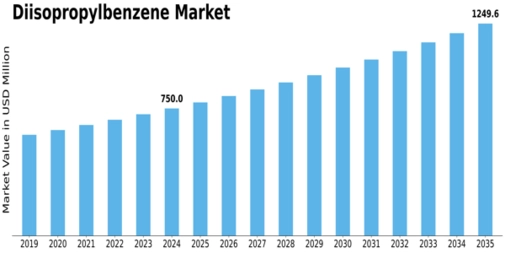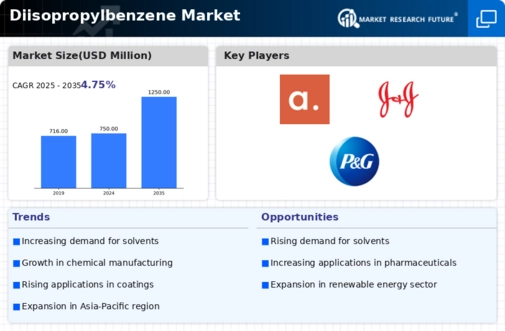Diisopropylbenzene Size
Diisopropylbenzene Market Growth Projections and Opportunities
The Diisopropylbenzene market is dynamic due to several factors that play out together. Among the most significant influencers is demand from end-use industries, particularly the chemical and manufacturing sectors. Consequently, this downstream industry activity largely determines how much the market will grow.
Additionally, the global economic landscape plays a crucial role in shaping the Diisopropylbenzene market. Economic conditions impact on manufacturing activities, consumer spending and overall industrial output. The Diisopropylbenzene market is often positively influenced by periods of economic growth which typically lead to increased demand for chemicals and other related products. Conversely during low economic times there are less industrial activities thus deteriorating the dynamics of this market.
On top of that environmental regulations and sustainability initiatives also significantly affect the Diisopropylbenzene market. Industries are increasingly expected to adopt environmentally friendly practices as well as chemicals due to rising environmental awareness. Hence manufacturers of Diisopropylbenzene must conform to strict environmental standards and regulations if they want to remain in business. This trend towards green/sustainable chemistry has profound potential consequences on the shape of markets with eco-friendly alternatives gaining more ground.
Furthermore technological advancements are very important in shaping the direction of Diisopropylbenzene market today. Innovations like catalytic hydrogenation during production or other synthesis processes can increase efficiency, reduce costs as well as enhance overall quality of diisopropylbenzene being produced. Therefore companies investing heavily in research and development efforts towards remaining ahead technologically could meet changing needs of their customers better.
Production factors such as raw materials availability and cost also have a great impact on supply chain dynamics for Diisopropylbenzene. Benzene is the main raw material used in diisopropylation process so that any changes in its prices might lead to altered production costs and therefore affect the market dynamics. By having a dependable supply chain, Diisopropylbenzene can be continuously provided to end-users without disruptions that may create market imbalances.
In addition to this there are also global trade policies as well as geopolitical factors which shape the Diisopropylbenzene market. Tariffs, trade agreements and geopolitical tensions have consequences on international flow of chemicals thus affecting both supply and demand sides. Companies in the Diisopropylbenzene business must always watch out for such elements in order to deal with the intricacies of global trade.
The competitive dynamics within the Diisopropylbenzene market are influenced by key players, their relative market shares, and strategic moves. Market heads often concentrate on expanding their product portfolios or entering new markets or even forming strategic alliances so as to maintain a competitive advantage. Mergers and acquisitions are quite common approaches used in order to build or strengthen our presence in any industry.















Leave a Comment